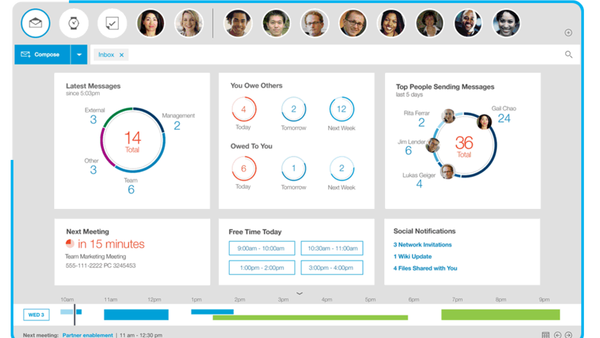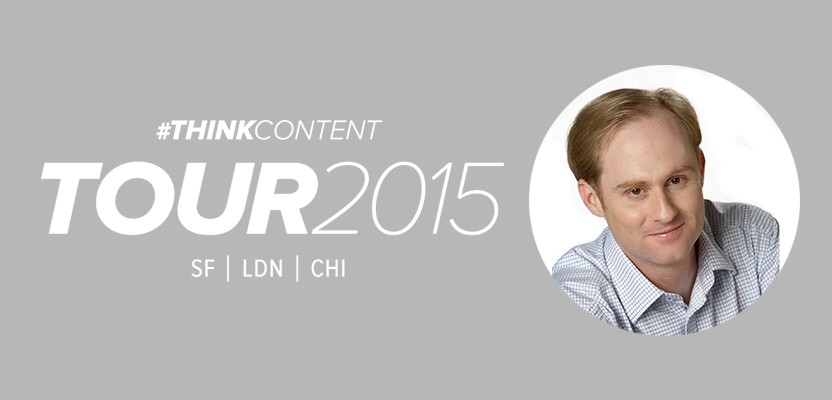To kick off the week of anticipation for NewsCred’s sell-out #ThinkContent Tour, we had the chance to meet up with one of their speakers, Global Managing Partner of IBM Social, Andrew Grill. His talk on Thursday will cover “The Power Within: How to create Eminence as a Brand With Thought Leadership” - a lesson I think should be highly valued today amongst those creating content across multiple platforms. Andrew is defined as an early adopter and evangelist when it comes to harnessing the tools of social. He established his social reputation when he was CEO of the leading social influence platform, Kred. Andrew presents his insights on a regular basis at international conferences including TEDx and others. Step inside our sunny chat over tea at the Hospital Club:
AS: Who are some other speakers at #ThinkContent you are looking forward to connecting with?
AG: Jeremy Waite: Head of Digital Strategy EMEA at Salesforce, is a personal friend of mine, and always shares things that are exciting, stimulating and challenging. Anna Watkins, Managing Director of Guardian Labs, because they do amazing things with analytics and content. I’ve heard them speak a number of times, they are one of the main newspapers that is really embracing digital in a big way so their innovations in this space are always very interesting. And of course Dan Balmer, from Aston Martin – I look forward to hearing what luxury car brands are doing to captivate business with content and will be very interesting as well. I think NewsCred have pulled together a great platform of speakers so the whole day should be fascinating.

AS: What’s your favorite social network at the moment?
AG: That’s an easy one! I have been addicted to Twitter since I joined back in 2007. Having said that though I am learning more about Instagram. What’s interesting is years ago I would be in a Starbucks and I would hear someone talking about tweeting something or putting something on Facebook, when you’re in a public environment you’re thinking, ‘Wow, that’s going mainstream’. Now when I am on the tube and I look across and everyone is on Instagram. There is a shift to these more visual networks. I think that the big opportunity is seeing how it can be monitised and what analytics could do here – I definitely think this is one to watch.
AS: What brand comes to mind when you think of social business success?
AG: So the first thing you really need to understand what is the definition of is social business, there’s a lot of noise out there, ‘Is it social media? Is it social?’.. The definition I like to use: a social business is an organization whose culture and systems encourage networks of people to create business value. When I say that - and I say that a lot at conferences, and to a lot of clients, people listen and say there is no mention of Twitter, Facebook, likes or fans; its about business value, its about culture, its about people. When we talk about social business we think; what is the real business benefit of social media?
One that comes to mind is CEMEX, an IBM client from South America. Why would a cement company really benefit from using a social business network? They found that by hooking up their people around the world on an internal network, much like we have at IBM, then they are able to reduce product development cycle time from years to months and weeks, which is greatly helped when you have everyone communicating in real time. So when we say social business success: it’s about companies that have learned not just how to adapt the technology but it is about the culture change. When you’re introducing these techniques into an organization, you must be analysing how they share. I think in a lot of organisations, people like to hide information: it’s their power base.
"Your value to an organisation won’t be what you know - it will be what you share."
So the presentation I am doing on Thursday will be shared with my team, it will be shared with IBM, and then the network of people so the whole company can share in the understanding. This touches deep into every part! It touches HR, procurement, for example recruitment is now a function of marketing, talking to employees and seeing content from the company helps jobseekers discover if they are the right fit.
AS: What do you think were the biggest changes in social for 2015? And any trend forecasts for 2016?
AG: In 2015 I saw a lot of companies get more serious in social and putting real dollars towards it. But now the discussion is heading into ‘How do we go beyond that? Were doing the social media thing - we have a presence and a team but what’s next?’ - and when I explain that they can use it for market research, recruitment, and employee satisfaction, they really what to know how it’s done. We’re entertaining a lot more discussions on collaboration. Whether it is an IBM product or Slack, a lot of people are trying new tools to communicate across time zones, across geographies and across cultures. We take a lot of time to advise on how best to adopt these technologies. A lot of people install the collaborative platform and then say it hasn't worked, and it’s generally because it has lived and died in one department, and they haven't looked into the cultural repercussions of fully integrating a collaborative system. So when I look into my crystal ball I can see inspiration come from ‘How do you make a big company feel small? You will see the social network come inside the organisation and internal and external social will be intertwined. And for the creative industry this is very important because you have people working together from different organisations and freelancers work in real time and how to they come together across multiple platforms. I can’t remember the last time I actually sent an email with a file in it! I actually share it in the cloud and then the link is shared so the file stays at a central point, and that’s the future.
AS: What are some of the biggest achievements you had at IBM this year?
AG: So IBM had its biggest achievement this year from the launch of Verse, a cloud based email platform. This is the evolution of Notes. We’ve had thousands of IBM’ers that have moved onto this. Rather than emailing files around, from the Verse client saves my files on my internal social platform and I can control who has access to them. Verse will get smarter and smarter because what we do really well is analytics, and exploring how tools like Watson can help you to manage your email is what really excites me about the Verse platform.

Screenshot of IBM's Verse Platform
AS: You spoke about Social Networks of the Future in some of your previous lectures, have your thoughts on this changed at all?
AG: The more I talk to clients the more I can see how they are taking social more seriously. Rather than having 80 people sitting around and reading tweets to and responding, I imagine a cognitive era where IBM’s Watson will interrogate and understand what’s going on so the right message gets to the right part of the organisation. I still see many companies developing what I call “social switchboards”, where just like a telephone switchboard, all social information comes to the one team, so this one team has to work out where they should send the message, and in the process, they might miss important messages, and they never get passed to the right department. What I am seeing now is with smart analytics, companies can embed social in all their processes. The other challenges for social networks of the future is the need to have a management board that understands that everything is going digital and viewing this from a digital lens.
AS: A bit outside the business realm, there have been a couple articles recently about how Generation Z leaving social as they are the new silent generation, what are your thoughts?
AG: I don’t think millennials are leaving but they are plateauing on these major networks. We talk about the dark web, and I think we have are seeing the rise of the dark social web and these younger generations are using networks that are not easily measured by brands, meaning the effectiveness of these networks for brand messages might be a bit harder to measure by advertisers. There is the ongoing challenge of how to connect with people on social who don’t want to be found.
ThinkContent Tour: London will be taking place on Thursday 29th October from 12:00 – 7:00 pm. Andrew’s Lecture will commence at 1:00pm so make sure you grab a seat.
See you there!






